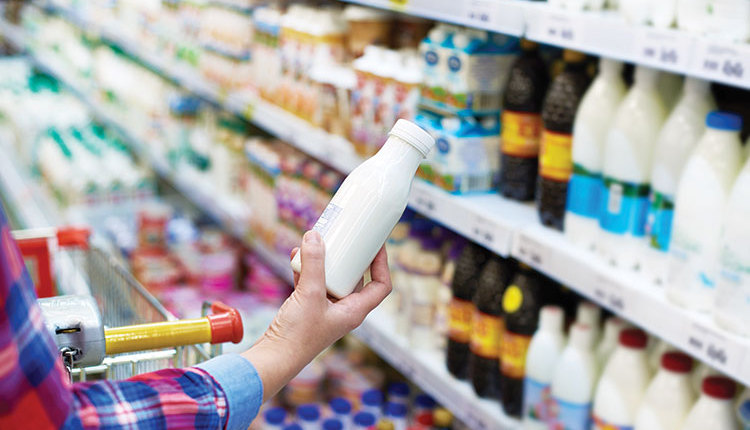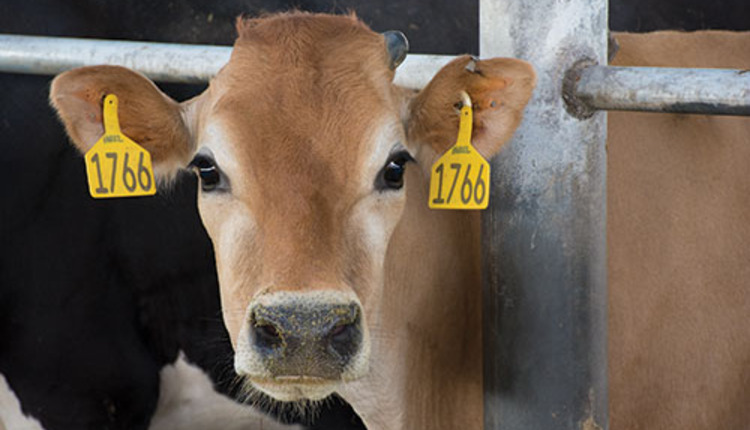The author is a regional marketing manager at Select Sires in the Mid-Atlantic area. He is a graduate of the Young Dairy Leaders Institute.

In the garage at my parent's farm are vintage peanut butter jars that hold all kinds of things ranging from screws to bolts. However, a quick glance of the jars will show two main differences from the peanut butter jars of today; the older jars in the garage are made of glass and have bottoms that are flat. It is a true testament to the old adage that "things aren't always as they seem."
In the past few years, peanut butter manufacturers have faced declining margins like most other segments of society and have taken bold, albeit somewhat deceptive steps to buoy margins. Instead of selling jars of peanut butter in the common 18-ounce, flat-bottomed size, the packaging has transitioned to a 16.3-ounce size with a bump in the bottom of the jar. Of course, the price hasn't changed.
If peanut butter were the only product where this occurred, it wouldn't be much of a story. But if you take a walk down any grocery aisle today, you'll notice shrinking package sizes at not-so-shrinking prices. Thinner cereal boxes, cookie packages with fewer cookies, and chip bags with extra air inside are just a few of the examples where the packaging size looks the same from the front but the contents hold considerably less. So where does dairy fit in all of this and how does that affect demand?
The most obvious dairy product affected is the "half gallon" of ice cream. Of course, you would have to look long and hard to find a half gallon today as many of the product offerings have transitioned to a 1.75- or 1.5-quart size. A half gallon has 2 quarts, so a 1.5-quart package equates to a 25 percent reduction in ice cream for every container that is sold; 25 percent less ice cream also means 25 percent less milk needed to fill that container.
To learn more see page 649 of Hoard's Dairyman's October 10, 2010 issue

In the garage at my parent's farm are vintage peanut butter jars that hold all kinds of things ranging from screws to bolts. However, a quick glance of the jars will show two main differences from the peanut butter jars of today; the older jars in the garage are made of glass and have bottoms that are flat. It is a true testament to the old adage that "things aren't always as they seem."
In the past few years, peanut butter manufacturers have faced declining margins like most other segments of society and have taken bold, albeit somewhat deceptive steps to buoy margins. Instead of selling jars of peanut butter in the common 18-ounce, flat-bottomed size, the packaging has transitioned to a 16.3-ounce size with a bump in the bottom of the jar. Of course, the price hasn't changed.
If peanut butter were the only product where this occurred, it wouldn't be much of a story. But if you take a walk down any grocery aisle today, you'll notice shrinking package sizes at not-so-shrinking prices. Thinner cereal boxes, cookie packages with fewer cookies, and chip bags with extra air inside are just a few of the examples where the packaging size looks the same from the front but the contents hold considerably less. So where does dairy fit in all of this and how does that affect demand?
The most obvious dairy product affected is the "half gallon" of ice cream. Of course, you would have to look long and hard to find a half gallon today as many of the product offerings have transitioned to a 1.75- or 1.5-quart size. A half gallon has 2 quarts, so a 1.5-quart package equates to a 25 percent reduction in ice cream for every container that is sold; 25 percent less ice cream also means 25 percent less milk needed to fill that container.
To learn more see page 649 of Hoard's Dairyman's October 10, 2010 issue








